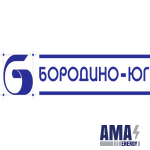BIOS system
(设备/材料)
描述:
The BIOS system is a treatment facility designed to purify domestic wastewater and industrial wastewater of similar composition from residential buildings, low-rise buildings, cottage villages, hotels, sanatoriums and other facilities located in areas where connection to a centralized sewerage system is unprofitable or which do not have a centralized sewerage system. The BIOS deep biological treatment plant consists of mechanical and biological wastewater treatment sections. In the mechanical wastewater treatment section (septic tank), the water flow is purified from large suspended matter (sand and other insoluble inclusions). The main purpose of using a septic tank is to purify water for further wastewater treatment. Then the wastewater is sent for biological treatment, due to the ability of microorganisms to use some pollutants as a food source. Biological wastewater treatment is carried out in two stages: in the absence of oxygen (anaerobic) and in the presence of dissolved oxygen (aerobic). Treated water is discharged into the nearest drain. If necessary, wastewater can be discharged into a storage tank and pumped into a reservoir using any type of pump. The BIOS biological treatment plant provides wastewater treatment to levels that meet regulatory requirements for maximum permissible concentrations of pollutants in reservoir water (SanPiN 2.1.5.980, GN 2.1.5.1315, GN 2.1.5.1316), which allows discharging treated wastewater directly into fishery, domestic and recreational water bodies or onto the terrain (drainage ditches, roadside ditches, etc.). The processes of biological wastewater treatment are based on the biochemical oxidation of organic pollutants by activated sludge microorganisms under aerobic and anaerobic conditions. As a result of these processes, organic matter decomposes to form simpler low-molecular compounds that undergo further oxidation. Experience shows that organic compounds of the aliphatic series (esters, acids) are easily oxidized by biochemical oxidation; benzoic acid, ethyl and amyl alcohols, glycols, chlorohydrides, acetone, glycerin, aniline and a number of other substances are also easily oxidized. With long-term adaptation of microorganisms, even such stable compounds as toluene, xylene, petroleum hydrocarbons, chlorine-substituted hydrocarbons, etc. are decomposed. The biological method of wastewater treatment (biological wastewater treatment), in contrast to physicochemical methods of treatment (chlorination, ozonation, blowing off ammonia with air, ion exchange, electrolysis, reverse osmosis, etc.), does not require expensive and scarce reagents, does not lead to an increase in the salt content of wastewater, and the volume of sediments does not increase.
概观:
| Name | Quantity users | Manufacturer activity, m3 /day | Quantity blocks | Dimensions, mm | ||
| height | diameter | length | ||||
| BIOS 10 | up to 50 | 10 | 1 | 2450 | 2300 | 5500 |
| up to 80 | 16 | 1 | 2450 | 2300 | 6000 | |
| up to 100 | 20 | 1 | 2450 | 2300 | 7000 | |
| up to 125 | 25 | 1 | 2450 | 2300 | 7500 | |
| up to 150 | 30 | 1 | 2450 | 2300 | 8500 | |
| up to 200 | 40 | 1 | 2450 | 2300 | 10000 | |
| up to 250 | 50 | 1 | 2450 | 2300 | 12000 | |
| up to 275 | 55 | 1 | 2450 | 2300 | 12500 | |
| up to 300 | 60 | 1 | 2450 | 2300 | 13000 | |
| up to 375 | 75 | 2 | 2450 | 2300 | 18000 | |
| up to 500 | 100 | 2 | 2450 | 2300 | 2*12000 | |
| up to 625 | 125 | 2 | 2450 | 2300 | 2*13000 | |
| up to 750 | 150 | 3 | 2450 | 2300 | 3*12000 | |
| up to 800 | 160 | 3 | 2450 | 2300 | 3*13000 | |
| BIOS 175 | up to 875 | 175 | 3 | 2450 | 2300 | 3*13000 |

OOO "Borodinoyug"
地点: 344018, Rostov region, Rostov-on-Don, Mechnikova st., 81, building 3
主要产品/服务: Recycling systems
